Welcome to Bubble Watch 2022. For the next 33 days right up to Selection Sunday, you’ll be asking where the boundary is between “in” and “out” for the NCAA men’s basketball tournament field. We’re here to help.
The Watch pledges to weigh each stunning upset and shocking surprise and assess what it all means. To summarize those upsets and shocks so far: Virginia won the national title three short years ago but is hanging on by a thread at Bubble Watch. Auburn used to be a football school, but the Tigers are already a lock here. And Wake Forest — yes, Wake Forest! — looks like it will get a chance to win its first NCAA tournament game in 12 years.
This year we’ve expanded our initial population of Bubble Watch teams by about 10% over and above what we’d usually include. Doing so is our response to the decisions made by the NCAA men’s basketball committee over the past two tournaments.
Generally speaking, tournament selection has become more closely aligned with “advanced metrics” in recent years. The rollout of the NCAA’s NET rankings prior to the 2019 selection, for example, furnished the committee with a new sorting metric.
On each NET-sequenced team sheet, five additional metrics are listed for the committee’s consideration. KenPom, Sagarin and ESPN’s BPI can, for lack of a better term, be thought of as team-based measures. KPI and ESPN’s strength of record (SOR), conversely, are more outcome-based, assigning a value to each win and loss.
In the past two selections, the committee has tended to weigh outcome-based metrics more heavily than team-based measures near the cut line between the last team in and the first team out. There was, however, one telling exception to this tendency: the committee’s selection of Utah State as an at-large team in 2021.
While a 2021 “first four out” team such as Louisville looked like it had the better profile in terms of outcome-based measures last spring, the Aggies were stronger in team-based metrics. USU won a bid, and the Cardinals did not.
The lesson we’ve drawn here at the Watch is to spread our bets. Bubble teams like Iowa and San Francisco, for example, currently have very good rankings at KenPom. Other tournament hopefuls such as Notre Dame and Iona would prefer to emphasize a metric like SOR. History suggests both profile types can earn one of the last at-large bids in the field.
Once again this season, Bubble Watch will be updated continuously from now until Selection Sunday. Whether a team’s in action or not, its entry will be updated if its path to a bid has been altered materially.
“Locks” have already won enough games to earn a bid. “Should be in” teams, well, should reach the field of 68 barring only the most robust of collapses.
“Work to do” is where the real action is. Grab some popcorn and watch as teams ascend to “should be in,” remain frozen in suspense or falter and disappear from the Watch completely.
In projecting the size of the 2022 bubble, we’ve modeled a field that includes 21 one-bid conferences. There were 20 such leagues in the 2021 field, though keep in mind the Ivy elected not to participate. Over the past decade, tournament fields have averaged 21.3 one-bid conferences.
Here’s our initial projection of the bubble:
Locks: 13 teams
The bubble: 53 teams for 34 available spots
Should be in: 22 teams
Work to do: 31 teams
ACC | Big 12 | Big East | Big Ten | Pac-12 | SEC | American | Others
ACC
Locks
Work to do

Wake Forest Demon Deacons
These very words mark the first time that current Bubble Watch HQ staff members have ever had occasion to mention Wake Forest — and this is our fifth season doing this. Not only are the Demon Deacons here, they’re tantalizingly close to moving on up to “Should be in.” While Wake is appearing in mocks as a double-digit seed at 19-5, that bracket position would improve should the Deacons win at NC State and at home against Miami. Coach Steve Forbes is delivering heady stuff for a program that hasn’t won an NCAA tournament game in 12 years. Alondes Williams is a 2-point master as a 6-foot-5 lead guard, and this is the ACC’s best interior defense by a comfortable margin. When and if Wake learns to hold on to the ball, the ACC will have an even tougher opponent on its hands.
2:38
Check out the top plays from this past week in men’s college basketball as postseason tournaments draw closer.
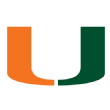
Miami Hurricanes
After recording what might without exaggeration be called a season-defining win at Duke in early January, the Hurricanes have dropped four of their past seven games. Jim Larrañaga’s men are still in the vast majority of projected brackets, but they’ve fallen to a double-digit seed in the wake of a season sweep by Florida State and losses to Notre Dame and Virginia. (To be sure, FSU’s was an exceedingly narrow sweep, one with a total margin of victory of two points.) Over the next month, however, the Hurricanes should have every opportunity to improve their 16-7 record. One visit to Wake Forest notwithstanding, there’s a chance the Hurricanes won’t face another at-large-level opponent until the ACC tournament. Assuming UM takes care of business against the lower two-thirds of the league, the program’s first NCAA bid in four years could be in the offing.
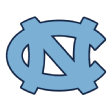
North Carolina Tar Heels
The knock on the Tar Heels is that they haven’t beaten a clear NCAA tournament-quality opponent all season and, in fact, they’re 0-7 in Quadrant 1 opportunities. There’s no “but” coming here. That’s a legitimate knock. Yet somehow UNC is clinging to bracket life as a “last four in” type of dogged survivor. Possibly this can be traced, in part, to a notably strong ranking (low 30s) for strength of record. While we’re exploring mysteries, Bubble Watch also has a brazen hypothesis on why North Carolina games occasionally get completely out of hand. The strength of this team on either side of the ball is Armando Bacot‘s spectacular defensive rebounding. When opponents are hitting their attempts, however, “holding teams to one shot” means teams need only one shot. See, for example, lopsided losses to Miami, Wake Forest and, yes, the Blue Devils.

Notre Dame Fighting Irish
When Notre Dame beat Kentucky by four in South Bend in early December, it was taken as a sign that something was wrong with the Wildcats. Now we know the Fighting Irish had just posted their first victory in a 13-3 run of very good basketball. That run hasn’t necessarily shown up yet in the team’s 60-something NET ranking, but Mike Brey’s group clocks in about 30 spots higher than that in terms of strength of record. That profile has lifted the Irish into “last four in” territory in a number of projected brackets, an ascent that has been powered by defense. Yes, Notre Dame is customarily known for offense, but in 2022, newcomer Blake Wesley and his veteran teammates are holding opponents to a bare minimum of 3-point attempts.
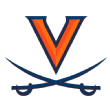
Virginia Cavaliers
Reece Beekman‘s 3 in the final seconds gave Virginia a 69-68 win at Duke and at one stroke lifted his team into Bubble Watch. Suddenly the Cavaliers are 15-9 and 9-5 in the ACC, with wins over the Blue Devils, Providence and Miami. That’s enough to at least start this discussion. Tony Bennett’s team was saddled with a NET ranking.in the high 80s prior to the Beekman bomb, and, even with a win at Cameron Indoor to their credit, the Hoos have performed at a level that’s merely average on both sides of the ball in ACC play. Be that as it may, Virginia is officially on the radar here at the Watch. Another win against Duke certainly wouldn’t hurt, and the Blue Devils will be coming to Charlottesville later this month.

Florida State Seminoles
Leonard Hamilton’s team is hanging on by a thread here at Bubble Watch. The Seminoles have lost four straight, and even before falling at home to Wake Forest, this team’s NET ranking was mired in the problematic 80s. So why is a group that’s 13-9 and 6-6 in conference play still here in “work to do”? Chortle all you want about this year’s “down” ACC, but the remaining schedule gives FSU opportunities to play its way into the bracket. It won’t be easy. Road games at North Carolina and Duke and a home date against Notre Dame all qualify as must-wins. The Noles have struggled mightily to get the ball in the basket, but this defense does force turnovers.

Big 12
Locks
Kansas Jayhawks, Baylor Bears, Texas Tech Red Raiders
Should be in

Texas Longhorns
For 10 days in January, the Longhorns looked overrated, losing on the road to Oklahoma State and Iowa State and then at home to Kansas State while taking care of Oklahoma in Austin. That moment aside, however, Texas has more or less approximated the band of veteran transfers that occasioned some buzz in the preseason. Put it this way, metrics like KenPom have a higher opinion of Chris Beard’s group than do the mock brackets. The Horns have outscored the Big 12 by almost the same margin as Texas Tech, and this defense has held those conference opponents to just 0.94 points per possession. Texas is 18-6 and apparently on track for something in the neighborhood of a No. 5 seed.

TCU Horned Frogs
These are pretty good times for TCU basketball. While Jamie Dixon’s men haven’t been ranked at any point this season, they’re expected to earn something in the vicinity of a No. 8 seed come Selection Sunday. That’s no small thing, surely, for a program that has been to one NCAA tournament since 1998 and hasn’t won a game there since 1987 (when Dixon was a senior playing for Jim Killingsworth). The Horned Frogs are 4-1 in true road games, and Emanuel Miller and Eddie Lampkin provide excellent offensive rebounding. Those second chances would occur even more frequently, however, if TCU didn’t give away the ball so often. In fact, it’s likely the Frogs will be one of the most turnover-prone teams in the field of 68.
Work to do

Iowa State Cyclones
The difference between Iowa State and other Big 12 bubble teams with unsightly conference records is that the Cyclones have better wins: Texas Tech, Texas, Iowa, Xavier and Creighton. But it is also the case that, at 3-7 in the league, ISU is one highly unusual projected No. 7 seed. In a ranking of Big 12 teams according to per-possession scoring margin, for example, T.J. Otzelberger’s team would come in last, below West Virginia. While Iowa State excels at forcing turnovers and Tyrese Hunter in particular pressures ball handlers, conference opponents are making 56% of their 2s. Assuming this level of overall performance continues, the Cyclones could look far more bubbly entering the Big 12 tournament than they do currently.
1:46
No. 23 Texas improves to 17-6 after a huge 22-point win over Iowa State.

Oklahoma Sooners
Oklahoma’s tournament hopes are in jeopardy. The Sooners have lost six of their past seven conference games, a stretch during which OU has shot just 24% on its 3s. One might suppose that the perimeter karma will correct itself and it might do just that, but Porter Moser’s team has also been turning over the ball left and right. True, Oklahoma benefits from membership in the loaded Big 12. Even after this challenging run, the team’s NET ranking is still showing up in the respectable 40s and mock brackets continue to view the Sooners as a double-digit seed. Just the same, at 13-10 and 3-7, Oklahoma will have to find a few more wins at some point. The schedule’s about to serve up home games against Texas Tech and Texas bracketed around a visit to Kansas.

West Virginia Mountaineers
Stop us if this sounds familiar in the very strong Big 12 (see above: Oklahoma), but West Virginia’s profile somehow remains afloat after what for most teams would be a staggering number of losses. In the case of the Mountaineers, that staggering number is seven, as in seven defeats in a row. Yet here we are: WVU still looks bubbly in the NET rankings (60s) and downright impressive in terms of strength of record (40s). Now, again, we’re speaking of a team that’s 13-9 and 2-7 in conference play. And, no, this fiendishly clever “lose constantly and then earn a bid” strategy can’t really work. If the losses continue, coach Bob Huggins and his men will drop from consideration.

Big East
Locks
Should be in

Providence Friars
You don’t want to play a close game against these guys: Providence is 11-0 in contests decided by single digits. Great teams do on occasion play a fairly high number of close games. Purdue, for example, is 7-3 in such contests. Nevertheless, laptops have tended to be relatively skeptical of the Friars because the nail-biters have occurred not only against Wisconsin, Texas Tech and Marquette, but also in home games against Fairfield, Georgetown and Butler. “Relatively” skeptical means even the most jaundiced laptop will tell you PC has greatly overperformed its preseason expectations purely in efficiency terms. In any event, a Big East program with a 20-2 record will earn a really good seed. In Providence’s case, that’s looking like a spot on the No. 3 or 4 line.
0:20
Jared Bynum shows off his handles before knocking down a tough 3-pointer to put the cherry on top of Providence’s victory.
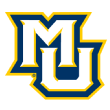
Marquette Golden Eagles
The coach who draws Marquette as an opponent in the NCAA tournament is going to wince when he looks at this team’s numbers for defense and shooting. Oklahoma transfer Kur Kuath has blocked five or more shots in a game five times this season, and Shaka Smart’s team has made 39% of its 3s in Big East play. True, the good news for our fretful opposing coach is that Marquette is notably weak on the boards at both ends of the floor. But if Justin Lewis and Kam Jones are hitting from outside, you can win the rebound battle only to lose the game. Also, that opposing coach might be bringing a No. 13 seed to the bracket: Smart’s group is projected to land on the No. 4 line.
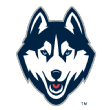
UConn Huskies
The Huskies haven’t looked their best over the past 80 minutes of basketball. Losing at home to previously (and, so far, subsequently) struggling Creighton was a bit of a surprise, and UConn followed that with a listless first 30 minutes at Villanova. Only a spirited run in the later stages of that game brought Dan Hurley’s team within 11 at the final horn. The Huskies next face Marquette at home before playing road games at Xavier and at Madison Square Garden against St. John’s. The formidable inside-outside duo of Adama Sanogo and R.J. Cole powers arguably the Big East’s best non-Villanova offense and has earned UConn a spot in mock brackets as a likely No. 6 seed. Assuming the past two games were just a blip, UConn has the ability to improve that seed.

Xavier Musketeers
Over the past two seasons, Xavier is 9-6 in Big East play in December and January and 3-6 in February and March. Included in that second figure is the Musketeers’ four-point loss at home to DePaul last weekend, the only loss outside Quadrant 1 that Travis Steele’s 16-6 team has suffered this season. The defeat to the Blue Demons could be merely a “burn the tape and forget it” situation for a team that had been on track for a No. 5 seed, according to projected brackets. Alternately, it could be something to keep in mind as Xavier readies for a visit to Seton Hall and two games against UConn as well as a home date against St. John’s. The Musketeers get more shots than opponents by taking outstanding care of the ball, but this group ranks in the middle of the Big East pack in terms of both shooting accuracy and defense.
Work to do

Seton Hall Pirates
In mid-December, Seton Hall was 9-1 and ranked No. 16 in the AP poll. Then conference play began, and at 5-6 in the Big East, the Pirates have dropped to a double-digit seed in projected brackets. Still, while Bryce Aiken has sat out the past five games and remains in concussion protocol, SHU did record a 19-point home win over Creighton without its 25-year-old super-senior. Ike Obiagu is one the nation’s best rim defenders, and Alexis Yetna‘s offensive boards have been crucial for a group that can struggle to hit shots. A win or, especially, two in upcoming games against Xavier (home), Villanova and UConn (both on the road) would go a long way toward solidifying the Hall’s profile.

Creighton Bluejays
Creighton’s team sheet is something of a study in contrasts. On the one hand, the 13-8 Bluejays are the proud owners of some of the Big East’s best wins, up to and including road victories at Marquette (in two overtimes) and UConn as well as a 20-point triumph over Villanova in Omaha. On the other hand, CU has been outscored with some room to spare by its opponents in Big East play, and the 70-something NET ranking is dipping perilously close to “not your usual at-large number” territory. Greg McDermott’s team is about to embark on a forgiving portion of its conference schedule, and if the expected wins materialize, the Bluejays will likely continue to straddle the line between “in” and “out” in the projected field.

Big Ten
Locks
Purdue Boilermakers, Wisconsin Badgers
Should be in

Michigan State Spartans
At 17-5, Tom Izzo’s team has three “normal” losses and two rather strange ones. No one will begrudge the Spartans for falling short against Kansas, Baylor or Illinois, but the two-point home defeat to Northwestern and the 21-point road loss at Rutgers in MSU’s most recent outing feel more aberrant. In fact, losing at home to the Wildcats qualifies as a Quadrant 3 defeat. Roll all of that basketball together and you’re looking at a potential No. 4 or 5 seed that hits its shots and forces misses (take a bow, Marcus Bingham) but also commits turnovers in abundance and, in Izzo terms, is surprisingly vulnerable on the defensive glass.
2:32
Illinois gets big games from Kofi Cockburn and Trent Frazier as they go from down two at halftime to a 74-57 win.

Illinois Fighting Illini
Much of this season has felt disjointed for Illinois, as concussion concerns sidelined Andre Curbelo and Kofi Cockburn for longer and shorter stretches of time, respectively. It was a bother for Brad Underwood from game to game, naturally, and the Cockburn-less, 16-point loss at Maryland speaks volumes in that regard. Nevertheless, this group’s bottom line aligns quite well with its preseason expectations. On the eve of a daunting road trip to Purdue, the Fighting Illini are atop the Big Ten standings and have played their way to a No. 4 seed in projected brackets. One underrated strength of this defense in Big Ten play has been its ability to deny 3-point looks to opponents.

Ohio State Buckeyes
In its past three Big Ten games, the Ohio State offense has lit up scoreboards to the tune of 1.25 points per possession. One of those games, rather remarkably, was a loss. In an 81-78 shootout at Purdue, the Buckeyes scored 35 points in the last 10 minutes alone. Chris Holtmann’s team spreads the floor and shoots a high number of 3s, which, in turn, provides the spacing necessary for the Big Ten’s most accurate 2-point shooting. E.J. Liddell is a prolific scorer inside the arc, of course, but Zed Key has been an interior force in his own right. In their most recent outing, Liddell and Key combined for 38 points on 15-of-21 shooting in a 15-point win over Maryland. At 14-5, OSU is cruising toward an expected No. 5 seed.

Indiana Hoosiers
The mood of the Hoosier faithful was downright jubilant back when Indiana knocked off Purdue in a jewel of a basketball game played in Bloomington. Now the feeling around the program is more subdued after home losses to Michigan and Illinois by 18 and 17 points, respectively. And with road tests upcoming at Northwestern and Michigan State, the fretful Indiana fan will be forgiven for showing concern. Just keep the concern in perspective: Indiana is 16-6 and hasn’t reached February with a record this good since the rotation featured Yogi Ferrell and Thomas Bryant. The Hoosiers are seen as a potential No. 8 seed, and the Big Ten is making just 45% of its 2s against a front line led by Trayce Jackson-Davis and Race Thompson.

Iowa Hawkeyes
In profile terms, Iowa’s best win is a 19-point victory over Utah State on a neutral floor. That contest provides the sole bright spot in the Hawkeyes’ 1-5 Quadrant 1 record. The habit when speaking of Fran McCaffery’s program the past few years has been to throw roses at this offense and bricks at the defense. Neither assumption holds in 2022. Keegan Murray has been outstanding, but on the whole this offense has been just average inside the arc and somewhat weak beyond it. The Hawkeyes offset iffy perimeter shooting to an extent by forcing a high number of turnovers and getting some easy scores in transition. Though currently projected as a No. 7 or 8 seed, Iowa could finish above .500 in the Big Ten thanks in part to a relatively gentle remaining schedule. That might earn the Hawkeyes a higher seed.
Work to do

Michigan Wolverines
At 11-9 and 5-5 in the Big Ten, Michigan isn’t in Bubble Watch by virtue of its stellar results. The Wolverines are here instead because of their performance and potential. Juwan Howard’s team could turn out to have the best non-Purdue offense in the Big Ten and is outscoring the league by an average of 2.5 points per game. Most years that margin would translate into an at-large bid. More importantly, a team that has performed to that level over the course of 673 possessions could conceivably win a significant portion of its remaining games. In UM’s case, those opportunities include home dates against Ohio State, Illinois and Iowa and road games against the Hawkeyes, Buckeyes and at Wisconsin. First up, a visit to Penn State.

Pac-12
Locks
0:26
Azuolas Tubelis throws down a thunderous slam to give Arizona the lead over USC.
Should be in

USC Trojans
On paper, a USC team that’s 19-4 and holding down a spot in the 20s in the NET rankings might look a little undervalued as a projected No. 7 seed. Then again, Stanford swept the season series with the Trojans, who’ve certainly been playing their fair share of nail-biters. The tense 79-72 win at home over Cal was particularly surprising, though to be fair, in their most recent outing, Andy Enfield’s men played an excellent first 30 minutes before falling by nine at Arizona. USC’s sneaky-good offense gets the job done primarily through shot volume, thanks to a lack of turnovers and the excellent offensive rebounding of Chevez Goodwin and Isaiah Mobley.
Work to do

Oregon Ducks
Dana Altman’s group is commonly being shown as one of the last teams in the field. That might seem relatively disappointing for a team that was ranked No. 13 in the AP preseason poll, but it represents a turnaround after the Ducks opened the season 6-6. Oregon has gone 9-1 since that time, including, crucially, a road sweep of UCLA and USC. No team, not even Arizona, has shot more accurately than the Ducks in Pac-12 play, a status earned in part by Will Richardson‘s efficiency from both sides of the arc. (While breaking through what promises to be a UCLA-Arizona logjam in the Pac-12 POY discussion will be difficult, Richardson deserves a look.) One concern for Altman going forward, however, is his team’s lackluster performance on the defensive glass.

Washington State Cougars
Let’s consider a different team in Eastern Washington than the usual one, shall we? Bubble Watch is getting in on the ground floor with the 14-7 Cougars, who cracked the KenPom top 30 thanks in part to a better per-possession scoring margin in Pac-12 play than UCLA’s. Kyle Smith’s group has won five straight, and, sure, with the exception of the victory at Stanford, all of those came against opponents that aren’t in the at-large discussion. But is bubble consideration really so far-fetched for a WSU team with a NET ranking in the highly impressive 30s? It is if you ask strength of record, in which the Cougs are down in the prohibitively alarming 100s. At least the schedule holds some promise of bringing about greater cooperation across metrics. Washington State has upcoming home dates against Arizona and Arizona State, followed by visits to UCLA and Oregon.

Stanford Cardinal
Here at Bubble Watch, we will never be accused of being dogmatic essentialists when it comes to a team’s NET ranking. Still, even the freethinkers at Watch HQ were taken aback when the cape was pulled back and Stanford’s NET ranking was revealed in all its belligerent aberrance. Despite a season sweep of USC and a win over Oregon, the Cardinal are clocking in around No. 90. Actually, Stanford and otherwise overlooked Colorado have both scored (0.98) and allowed (1.00) the exact same numbers for points per possession in Pac-12 play. Yet it is Jerod Haase’s group that shows up occasionally on this or that “next four out” list. Naturally, a home win over UCLA would help bring all of the above numbers into closer alignment with the voice of the mocks. Let’s revisit the question after the next 40 minutes of hoops.

SEC
Locks
Auburn Tigers, Kentucky Wildcats
Should be in

Tennessee Volunteers
After being blown off the floor at Kentucky in mid-January, the Volunteers have gone on something of a tear. Tennessee has put up a 5-1 mark since the laugher in Lexington, and even the one-point loss at Texas was an impressive defensive performance. Coach Rick Barnes has a defense that has pressured SEC opponents into turnovers on 24% of their possessions, and Santiago Vescovi has made 20 3s on 50% shooting in his past five conference games. At 16-6, the Vols appear in line for, at worst, a No. 5 seed in the 2022 bracket. Then again, UT’s next test is on the road and Mississippi State is eager to build its own profile.
2:04
No. 22 Tennessee pulls away from South Carolina, outscoring the Gamecocks 48-28 in the second half for an 81-57 win.

Alabama Crimson Tide
The Alabama offense has devoted almost half of its attempts to tries from beyond the arc in SEC play, yet this group has converted less than 27% of all those shots. This tendency reached its apex last weekend when the Crimson Tide went 3-of-30 from outside in an 11-point loss at home to Kentucky. Bama does, however, attempt a very high number of shots, and that has been a lifeline for Nate Oats and his men. A 14-9 record with wins over Gonzaga, Houston, Baylor, Tennessee , LSU and Miami (and losses to Georgia and Missouri) is putting the Tide in projected brackets as a No. 5 or 6 seed. One feature to note about those impressive wins is that they all came at home or on neutral floors. Alabama is 1-5 in true road games, with the only win coming at Florida.

LSU Tigers
In early January, LSU was 15-1 and being projected as a No. 2 seed. But Will Wade’s team has now lost six of its past seven, and, if anything, the defeats are getting worse. In their most recent outings, the Tigers lost by four at home to Ole Miss before hitting the road and falling by nine at Vanderbilt. Keep in mind this team started SEC play 3-1 with wins over Kentucky and Tennessee. At that point, LSU was holding conference opponents to just 0.90 points per possession, but those days are gone. The Tigers are now projected as something in the vicinity of a No. 6 seed as they embark on a four-game stretch against the league’s midsection and lower tier. Then comes a rematch with UK, in Lexington.

Arkansas Razorbacks
A month ago, Arkansas was 0-3 in the SEC, and a trip to the NCAA tournament looked like a pipe dream. Since that time, however, the Razorbacks are 8-0, including a win over West Virginia in the Big 12/SEC Challenge. The defense has been nothing short of spectacular over that stretch, as Eric Musselman’s team has limited its past seven SEC opponents to just 0.83 points per possession. This performance has lifted the Hogs to a No. 8 or 9 seed in mock brackets, and now this defense is about to be tested against the top of the league. In its final eight games, Arkansas will get two shots at Tennessee as well as its first looks at Auburn, Kentucky and Alabama.
Work to do
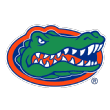
Florida Gators
If you’re the fan who decries “the .500 team from the big conference getting a bid,” well, Bubble Watch gives you Florida, 5-5 in the outstanding and highly entertaining SEC. In fairness, the Gators have tales of upward mobility in their own right. Leading scorer Colin Castleton landed in Gainesville after riding the bench at Michigan. Mike White’s rotation includes key contributors who transferred to UF from Cleveland State (Tyree Appleby), Charleston Southern (Phlandrous Fleming), Louisiana Tech (Anthony Duruji), Penn State (Myreon Jones) and UMKC (Brandon McKissic). With a NET ranking in the 40s and something of a tentpole neutral-floor victory over Ohio State, the perimeter-oriented Gators occupy the line between “in” and “out” in many mock brackets.

Mississippi State Bulldogs
In per-possession terms, Mississippi State claims a better scoring margin in SEC play than the likes of Alabama and LSU. In fact, the Bulldogs defeated the Crimson Tide in the only meeting between the two teams. That plus a season split with Arkansas has been good enough to put Ben Howland’s 14-8 team in “first four out” territory. Now a home date against Tennessee followed by visits to LSU and Alabama has the potential to form the heart of this team’s profile. This is the SEC’s best offense outside of Auburn and Kentucky, and Iverson Molinar lit up the Wildcats for 30 points in the Bulldogs’ overtime loss in Lexington. Note, however, that Mississippi State is the only team in Bubble Watch (and one of just 27 in Division I) that still hasn’t won a road game.

American
Locks
Work to do

Memphis Tigers
Bubble Watch is just going to put Penny Hardaway’s much-discussed Tigers right here where we can keep an eye on them. And wouldn’t it be too delightful if, after all the wailing and gnashing of teeth about this team not performing to expectations, this team performed to expectations and earned a bid? Stranger things have happened. Memphis clearly has work to do, but, hey, the Watch has seen worse. With a NET ranking poised ever so close to the 50s and a victory over Alabama to their credit, the 12-8 Tigers could jump right back into this thing with, say, three wins in the next four games? A home date with Tulane will be followed by visits to Houston, Cincinnati and SMU.

Others
Locks
Should be in

Saint Mary’s Gaels
It can be difficult to draw attention to your WCC program if you’re not Gonzaga, but there’s a fair chance this is the best team Randy Bennett has had in his 21 years at Saint Mary’s. As always, the Gaels play at a deliberate tempo, a style that hasn’t prevented SMC from posting far and away the WCC’s highest opponent turnover percentage. Augustas Marciulionis and one-time Cincinnati Bearcat Logan Johnson both record a fair number of steals, while 6-foot-11 senior Matthias Tass anchors the paint. Saint Mary’s is being projected as a No. 7 seed as it enters the toughest portion of its conference schedule. The homestretch will be highlighted by a visit to Santa Clara, home dates against San Francisco and BYU and two games against Gonzaga.
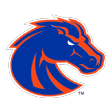
Boise State Broncos
In Quadrant 1 contests, Boise State carries an ostentatiously good 5-1 mark, the same record you see at this point in the season from the likes of Duke and Providence. Then again, BSU has suffered two Quad 2 defeats (at UC Irvine and at home to Saint Louis) to go along with one setback each in Quads 3 (St. Bonaventure on a neutral floor) and 4 (at home to Cal State Bakersfield). That body of work translates to a top-40 NET ranking and a projected No. 8 seed or so in mock brackets. The Broncos can be classed as the best all-around rebounding team in the Mountain West, a distinction that owes much to the excellent work turned in by Mladen Armus and Abu Kigab.
2:59
Chet Holmgren records a double-double as Gonzaga dismantles BYU 90-57 on the road.

Colorado State Rams
Everything appears to be coming together for the Rams in Niko Medved’s fourth season at the helm. After narrowly missing the 2021 tournament, CSU is 17-3 and playing its way toward a potential No. 7 seed in this year’s bracket. Neutral-floor victories over Creighton and Mississippi State as well as a home win against Saint Mary’s have given this profile the necessary cushion to weather a loss to UNLV in Fort Collins. David Roddy, Isaiah Stevens and John Tonje form a nucleus of scorers who can all get results from either side of the arc. Note, however, that as a team, Colorado State has been cold from outside so far in Mountain West play. Should that dynamic change for a rotation that was hitting its 3s prior to the MWC season, Medved’s offense has the potential to score at an even higher level.

Loyola Chicago Ramblers
When Bubble Watch 2023 rolls around, the Ramblers will be doing battle with VCU, Davidson and Dayton, among others, as a member of the Atlantic 10. In the meantime, Drew Valentine’s team is on course to earn a second consecutive bid (and third in four tournaments) coming out of the Missouri Valley. The 30-year-old Valentine gives his offense a green light from the perimeter more often than did predecessor Porter Moser, but with that single exception, this year’s version of Loyola is remarkably similar to last year’s Sweet 16 team. While the Ramblers lost 2021 Valley POY Cameron Krutwig, 2018 Final Four veteran Lucas Williamson has helped steer his team toward a potential No. 9 seed in his senior season.
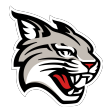
Davidson Wildcats
The case for the Wildcats can be stated simply: Bob McKillop’s team has lost one game since Nov. 18. That 18-1 run included a one-point win over Alabama in Birmingham. Luka Brajkovic, at 6-foot-10, is having what might fairly be termed a breakout senior season, and Michigan State transfer Foster Loyer is shooting 46% on his 3s on nearly six attempts per game. Having lapped the Atlantic 10 field in terms of offense, Davidson is being shown in projected brackets as a potential No. 9 seed. That position could improve if the Wildcats perform to expectations against what on paper is a relatively accommodating schedule the rest of the way.

Murray State Racers
Before it joins the Missouri Valley next season, Murray State is bringing down the curtain on its Ohio Valley career in style. The Racers are 22-2, and one of those losses was a road game at Auburn. Whether that level of performance translates into a No. 9 or 10 seed, or perhaps something higher, could depend on an upcoming road game at Morehead State and, especially, on a home date against fellow at-large aspirant Belmont. Murray has simply inundated OVC opponents with shot attempts, as this offense has recorded league-best numbers for both turnover and offensive rebound percentages.
Work to do

San Francisco Dons
With wins on neutral floors over Davidson and UAB and a road victory at BYU, the Dons have been a familiar presence in projected brackets throughout the season. Todd Golden’s team is now expected to earn a No. 9 or 10 seed, a placement that would mark the program’s first bid in 24 years. In WCC play, San Francisco has recorded the league’s highest number for shot volume, a feat that has allowed an offense that’s (exactly) average in its shooting accuracy to score points at an above-average rate. And the Dons will have ample opportunity to exhibit that frequent shooting, as they play no fewer than five games in nine days. Road tests at Santa Clara and Saint Mary’s loom especially large in that stretch. The Broncos and the Gaels might be nearby, but both will be tough.

Wyoming Cowboys
Meet the Providence of the Rockies. Much like the Friars, Wyoming has excelled in close games. Jeff Linder’s team is tied with Boise State in the loss column atop the Mountain West standings after compiling a 6-1 record in conference games decided by single digits. You can watch a good deal of basketball and not see an offense so heavily focused on just two players: Graham Ike and Hunter Maldonado. Both carry possession usage figures over 30%, no teammate playing regular minutes tops 17% and, most importantly, the heavy focus works. So far this has been the best offense in the league, one that makes its 2s and absolutely lives at the free throw line. The Cowboys are appearing in mock brackets as a double-digit seed.

BYU Cougars
It’s time to worry if you’re BYU. No one inside or outside the committee room will think less of a team for getting blown off its home floor by Gonzaga, but the larger issue for the Cougars is that they’d already dropped three straight heading into that contest. At 17-8, Mark Pope’s group has wins over Oregon, San Diego State and San Francisco, but purveyors of several projected brackets reacted to the loss at Pacific by dropping this team down to “last four in.” BYU has already swung and missed on two tries against the Zags, and the remaining schedule is divided between games the Cougars will be expected to win and a pivotal road date at Saint Mary’s.

San Diego State Aztecs
If all the offenses and defenses in the Mountain West were ranked 1 to 22 as individual units in conference play, the San Diego State defense would be No. 1 by a mile. (No. 2, for the record, would be the Wyoming offense.) Brian Dutcher’s challenge, however, is that in this same rating system the Aztecs’ offense would be ranked No. 20. SDSU’s elite defense supplied what is perhaps the team’s signature win, a 63-53 victory over Saint Mary’s on a neutral floor. Dutcher’s team is projected to be right on the cut line with Quadrant 1 opportunities still to come in the form of trips to Fresno State, Boise State and Wyoming. Note additionally that in the MWC, David Roddy understandably gets the Wooden interest and Orlando Robinson rightly draws the scouts, but if you were building a team with five clones of the same player, you could do worse than SDSU’s Matt Bradley.

Belmont Bruins
Nick Muszynski was a precocious freshman when Belmont beat Temple and scared the wits out of Maryland before losing by two in the 2019 NCAA tournament. Now he’s a grizzled 6-11 senior who scores at the rim, distributes the ball and blocks shots. His six assists helped fuel a 41-point explosion from teammate Ben Sheppard in the Bruins’ recent overtime win at Tennessee Tech. Casey Alexander’s team lost at home by 22 to Murray State in January and has been perched just outside of the projected field ever since. This situation could continue if, as expected, Belmont wins its next five games. That would then usher in a potentially decisive rematch on the road with the Racers.

VCU Rams
Playing against VCU can be a trying experience if you’re the kind of team that likes to score occasionally. Adrian Baldwin is at or near the top of the national leaderboard for steal percentage, and 6-9 teammate Hason Ward is an outstanding shot-blocker. Dayton somehow figured out a hack for this defense and rang up 82 points in a win last week, but otherwise the Rams have been consistently tough. The offense is less accomplished, however, and at 14-7 VCU remains just outside the projected field with a NET ranking in the 70s. Nor does the schedule look particularly helpful, as the Rams will get only one more shot at an Atlantic 10 at-large aspirant. Mike Rhoades’ team will pay a visit to Saint Louis for the regular-season finale.

UAB Blazers
Andy Kennedy drew up a schedule that included a number of “good win” opportunities for his team, and the Blazers came close but lost in just about every instance. Defeats by single-digit margins to San Francisco, West Virginia and South Carolina might represent missed chances, but UAB does have road wins at Saint Louis and North Texas that are looking more impressive with age. In sum, it’s a profile that has the Blazers on a fair number of “next four out” lists despite the team’s borderline-top-40 status both in the NET rankings and at KenPom. In his most recent outing, 5-11 junior Jordan Walker drained eight 3s on his way to 42 points in the Blazers’ blowout win over Middle Tennessee.
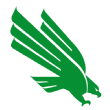
North Texas Mean Green
If you’ve played just two Quadrant 1 contests all season and gone .500 in those, you better win virtually all the rest of your games if you want to catch the committee’s eye. That’s pretty close to what North Texas has in fact done starting in late November. The Mean Green lost to Kansas in Orlando and then won at Wichita State the following month as part of a 14-1 streak that’s still ongoing. Head coach Grant McCasland prefers a deliberate pace, and Thomas Bell and Abou Ousmane give UNT a lift with their relentless offensive rebounding. The “1” in the 14-1 stretch was a six-point loss at home to UAB. That rematch happens later this month in Birmingham.

Utah State Aggies
Under first-year head coach Ryan Odom, the 15-9 Aggies have surfaced on some “next four out” lists thanks to excellent teamwide 2-point shooting and the superb play of Justin Bean. None of which, apparently, has impressed the strength of record metric. While USU beat Oklahoma on a neutral floor in November and can be found in the 30s at KenPom (not to mention in the 40s in the NET rankings), this same team ranks above 100 in SOR. Then again, these widely varying verdicts might be fated to converge, at least somewhat. Utah State still has games to play against the likes of Boise State, Colorado State, Wyoming and San Diego State.
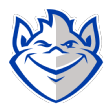
Saint Louis Billikens
SLU has significantly outperformed the preseason expectations placed upon a team that had just said goodbye to leading scorers Javonte Perkins, Jordan Goodwin and Hasahn French. In fact, there’s a fair possibility that this 2022 edition of the Billikens is just as good as last year’s veteran team. Yuri Collins is one of the best distributors in the nation, and, at 16-6 with a road win over Boise State and a home victory against Iona, Travis Ford’s team is lurking in the at-large discussion.

Chattanooga Mocs
The Mocs are a familiar presence in projected brackets that show them as the likely recipient of the Southern Conference’s automatic bid. (Which, by the way, is no sure thing. Furman will have something to say about that.) The question we wish to pose at the Watch, however, is whether Lamont Paris and his men might be able to grab an at-large spot. The answer is it’s conceivable, though hardly a sure thing. Start with a NET ranking in the decent — if not dazzling — 50s, and then consider the road win Chattanooga recorded at VCU the Saturday before Thanksgiving. There’s even a recent precedent: Wofford would have captured an at-large out of the SoCon with ease in 2019 had the Terriers not gone ahead and won the conference tournament. If the Mocs string together enough wins, they can earn the committee’s consideration.
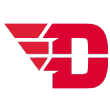
Dayton Flyers
At first glance, Dayton is a 15-8 team with losses to UMass Lowell, Lipscomb and Austin Peay. Yet this same team also owns wins over Miami and, especially, Kansas. While those two games won’t be enough to get the Flyers a bid by themselves, Anthony Grant’s group still has a chance to make its case. Dayton has already split two-game sets with both VCU and Saint Louis. If the Flyers take care of business in contests in which they’re favored, they could arrive at a closing two-game sequence loaded with promise. SLU finishes the season at Richmond and at home against Davidson.
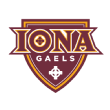
Iona Gaels
According to KenPom numbers, Iona is the strongest team the MAAC has produced since at least Monmouth in 2017. Therein lies the challenge for Rick Pitino and his players. Five years ago, it was Monmouth that was passed over on Selection Sunday despite a 27-6 record, a 17-game win streak and a MAAC tournament loss that occurred (oddly enough since the Hawks were the top seed) on the opponent’s home floor. If the 19-4 Gaels want a better outcome than that in 2022, they would be well advised to pile on the wins. A neutral-floor victory over Alabama paired with a NET ranking in the 60s might not be sufficient if the selection show were held today, even taking into account Iona’s lofty 30-something ranking for strength of record.
